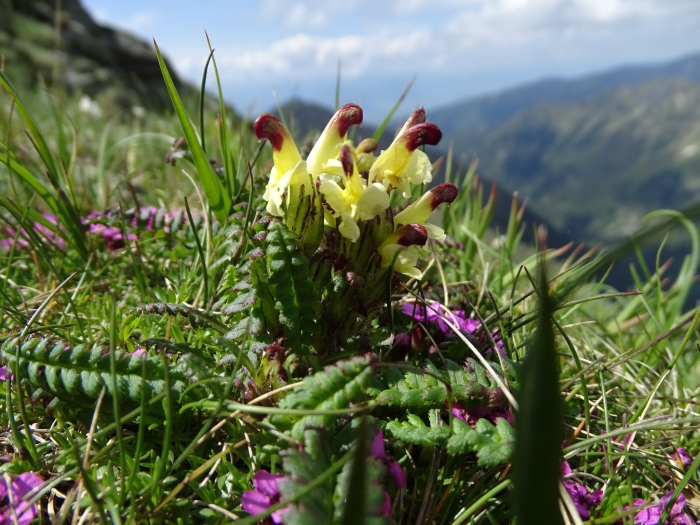Oeder’s Lousewort
(Pedicularis oederi)
Oeder’s Lousewort (Pedicularis oederi)
/
/

© Grzegorz Grzejszczak
CC BY-SA 4.0
Image By:
© Grzegorz Grzejszczak
Recorded By:
Copyright:
CC BY-SA 4.0
Copyright Notice:
Photo by: © Grzegorz Grzejszczak | License Type: CC BY-SA 4.0 | License URL: http://creativecommons.org/licenses/by-sa/4.0/ | Uploader: grzegorz_grzejszczak | Publisher: iNaturalist |

























Estimated Native Range
Summary
Pedicularis oederi, commonly known as Oeder’s Lousewort, is a perennial herb native to subarctic and subalpine regions of the Northern Hemisphere, including the mountainous areas of Europe, Asia, and North America. It is typically found in moist, open habitats such as meadows, stream banks, and wetland margins. This species prefers cool climates and is often associated with tundra and boreal forest ecosystems. Oeder’s Lousewort grows to a typical height of 10-30 cm and has a clumping form. It produces tubular, yellow to red flowers from mid to late summer, which are modest in size but can be quite showy when in large clusters. The plant does not produce significant fruit or berries, but its fern-like foliage can add texture to a garden setting.
Oeder’s Lousewort is valued for its ability to thrive in cold, wet conditions where other plants may struggle. It is used in wildflower gardens, rock gardens, and as part of naturalistic plantings in cooler climates. For cultivation, it requires consistently moist soil, good drainage, and can tolerate both full sun and partial shade. While not commonly available in the horticultural trade, it can be propagated from seed or division. Care should be taken as it can be susceptible to root rot if overwatered or planted in poorly drained soils. There are no popular garden cultivars, and it is not known to be invasive when grown outside its native range.CC BY-SA 4.0
Oeder’s Lousewort is valued for its ability to thrive in cold, wet conditions where other plants may struggle. It is used in wildflower gardens, rock gardens, and as part of naturalistic plantings in cooler climates. For cultivation, it requires consistently moist soil, good drainage, and can tolerate both full sun and partial shade. While not commonly available in the horticultural trade, it can be propagated from seed or division. Care should be taken as it can be susceptible to root rot if overwatered or planted in poorly drained soils. There are no popular garden cultivars, and it is not known to be invasive when grown outside its native range.CC BY-SA 4.0
Plant Description
- Plant Type: Herb
- Height: 0.5-1.5 feet
- Width: 0.5-1 feet
- Growth Rate: Moderate
- Flower Color: Brown, Red, Yellow
- Flowering Season: Summer
- Leaf Retention: Semi-deciduous
Growth Requirements
- Sun: Full Sun, Part Shade
- Water: Medium
- Drainage: Medium
Common Uses
Low Maintenance, Water Garden
Natural Habitat
Moist, open habitats such as meadows, stream banks, and wetland margins in subarctic and subalpine regions
Other Names
Common Names:
Scientific Names: , Pedicularis oederi, Pedicularis acaulis, Pedicularis atrorubens, Pedicularis flammea, Pedicularis foliosa, Pedicularis foliosa subsp. oederi, Pedicularis oederi f. oederi, Pedicularis oederi subsp. genuina, Pedicularis oederi var. oederi
GBIF Accepted Name: